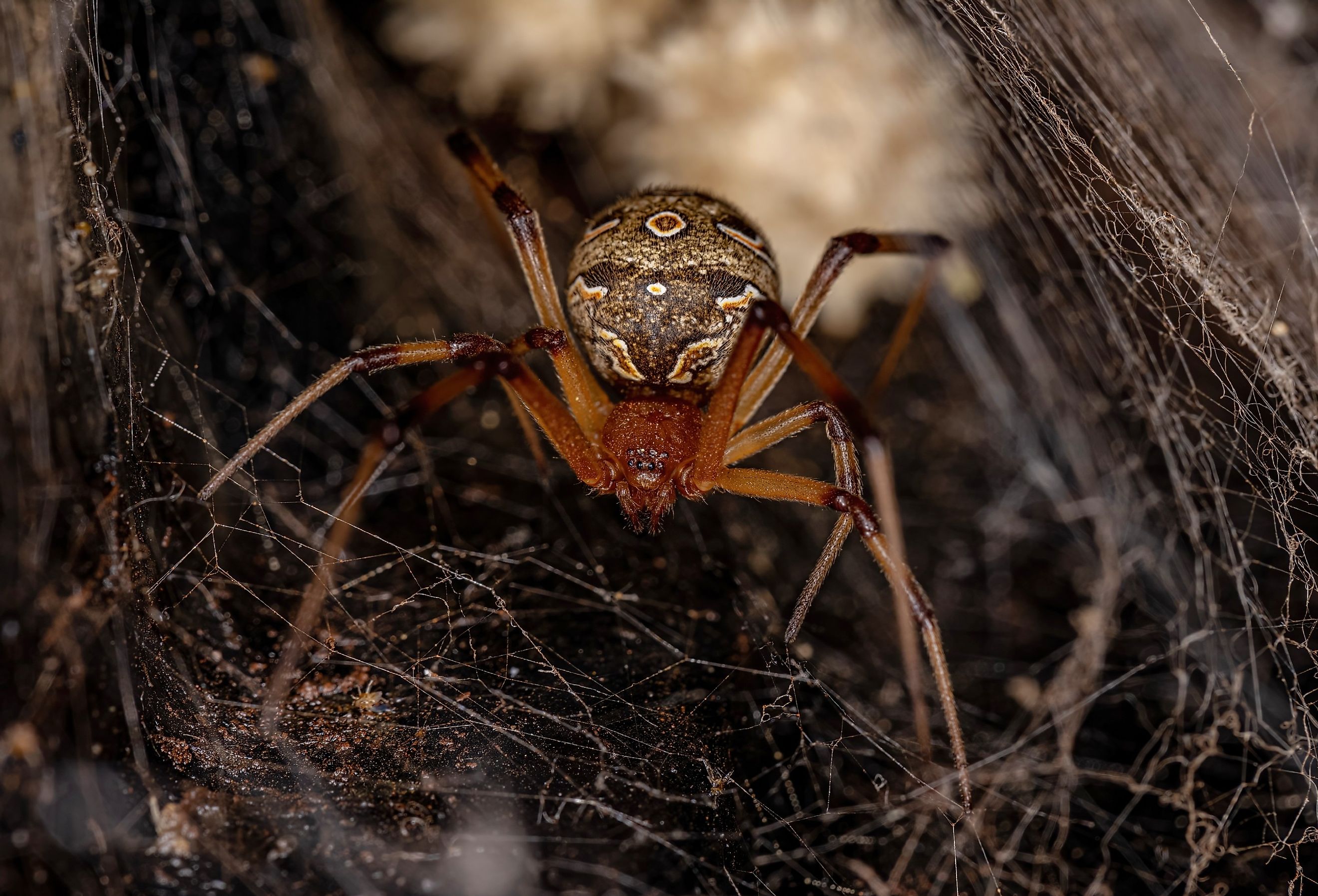
4 Most Venomous Spiders in South Carolina
Spiders are attracted to South Carolina for the same reasons humans may be drawn to the Palmetto State: a warm and humid climate, homes full of food, and abundant shelter. Today, the state is home to more than 600 species of spiders, most of which are harmless. However, there are four types of venomous spiders living in South Carolina: three variations of widow spiders, and the brown recluse spider. Although the Mayo Clinic notes that deaths from these venomous spiders are rare, they have been known to occur. Bites from these venomous spiders are definitely dangerous and can cause distress, discomfort, and pain. Learn how to recognize these venomous South Carolina spiders and how to treat a spider bite if one occurs.
Southern Black Widow (Latrodectus mactans)
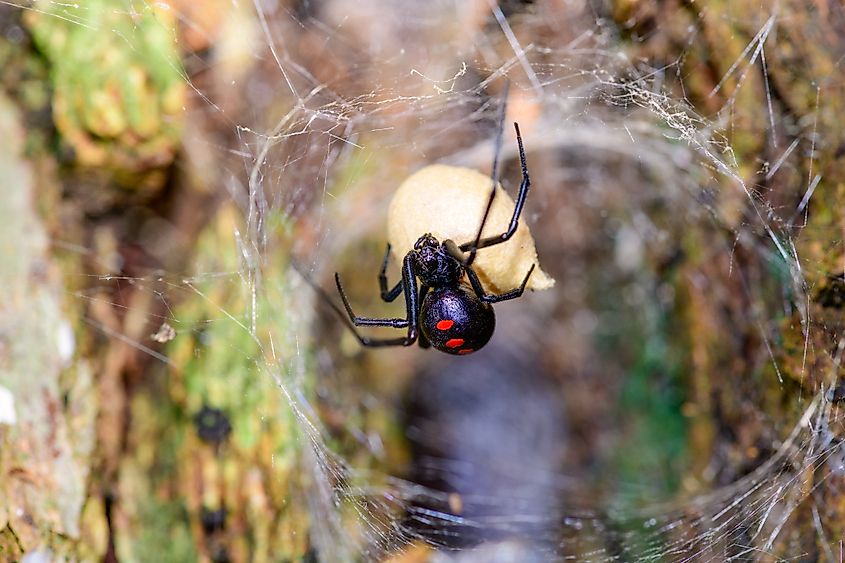
Found throughout South Carolina, the Southern black widow (Latrodectus mactans) can be identified by its shiny, black, bulging body with a red hourglass marking on the underside of its abdomen. Southern black widows are typically found under wood piles, stones, in crawlspaces, and in other dark, protected areas near buildings. While both the male and the female Southern black widow are venomous, the venom of the female Southern black widow is toxic, containing latrotoxin. The venom of the male Southern black widow, on the other hand, is weaker and not as abundant when injected into a human.
Male and female black widows of both the Southern and Northern species may look lighter in color when they are juveniles. As they mature, female black widows have glossier black bodies, with the trademark red hourglass figure on the abdomen. The color of the male black widow darkens a bit to a brown or grayish hue, potentially with a faint hourglass figure on the abdomen.
Northern Black Widow (Latrodectus variolus)
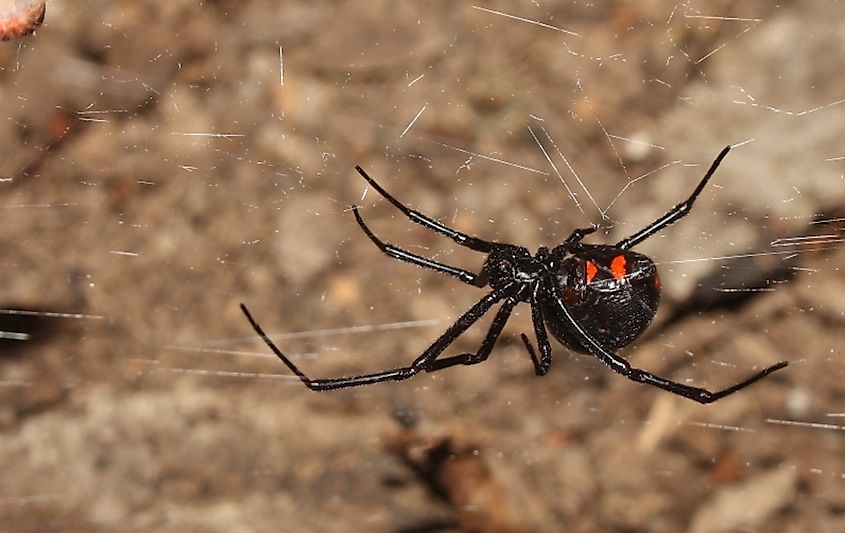
The Northern black widow (Latrodectus variolus) is primarily found in South Carolina's mountains and Piedmont region. It resembles the Southern black widow, but instead of the red hourglass shape on the abdomen, two red spots are often present. Northern black widows are usually found outdoors in garages, basements, and barns. They may be found indoors in unused blankets, under unused clothing, and in shoes.
Unlike that of the male, the venom of the female can be toxic. The female black widow is larger than the male, measuring about 1.5 inches long. Males measure about half the length of the female. In female black widows, the abdomen is rounder and more protruding, whereas males have a slimmer body. Female black widows are glossy black in color with a red hourglass shape on the abdomen (which is often broken in the northern species), while males are brown or grayish and have spots or stripes on the abdomen.
Black Widow Spider Bites: Signs, Symptoms and Treatment
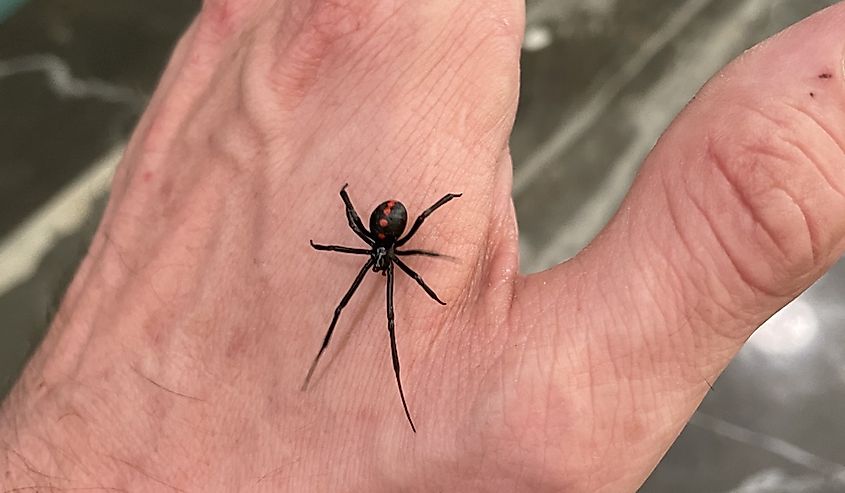
The venom of the female black widow (in both Southern and Northern species) contains chemicals, including the neurotoxin alpha latrotoxin. The spider's bite may feel like a pinprick and immediately cause minor swelling and redness. Fifteen minutes to an hour after a bite, a dull, muscular pain may spread from the bite area to the rest of the body. Individuals bitten may feel anxiety, trouble breathing, nausea, numbness, restlessness, and other symptoms.
If you or someone you know has been bitten by a black widow spider, call the Poison Control Center immediately. Until help arrives, clean the bite with soap and water, and ice the bite for 10 minutes on and 10 minutes off. Loosen clothing, and keep the bitten area still. If you are told by a Poison Control Center representative to go to the emergency room, bring the black widow with you in a secure container, if possible. Once treated with antivenom, symptoms should improve within 30 minutes. Death from a black widow bite is rare but may occur in young or old people and those who are severely ill.
Brown Widow (Latrodectus geometricus)
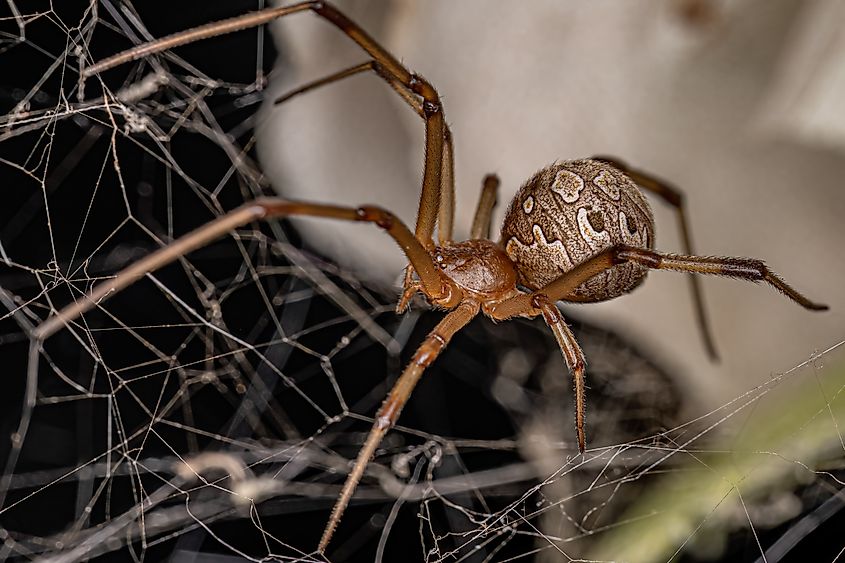
Brown widows (Latrodectus geometricus) tend to be found in South Carolina's southern tropical areas. These spiders are gray or brown and have black and white markings on the top side of their bulging abdomens. Female brown widows are tan or brown with a yellow or orange hourglass marking on the abdomen. Male brown widows are lighter in color and have a fainter hourglass marking. The legs of the brown widow have dark bands. Brown widows lurk in urban areas under home roof eaves, porch railings, unused flowerpots, wood piles, and in abandoned cars.
The female brown widow's venom is more toxic to humans than that of the male but less dangerous than that of the black widow. Female brown widows are larger than males, with bodies about 0.5 inches long (males measure about half that size).
Brown Widow Spider Bites: Signs, Symptoms, and Treatment
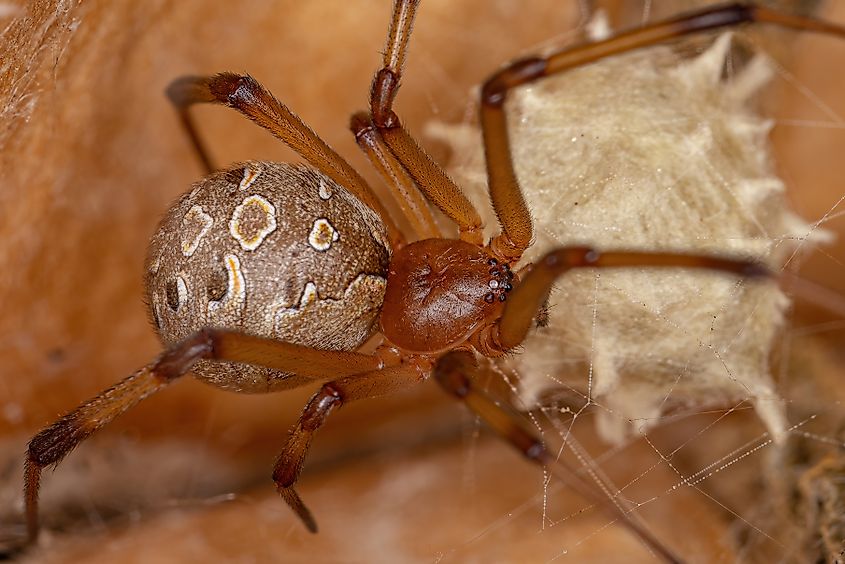
Female brown widow spiders are venomous but are much less dangerous than black widows. A brown widow spider is less aggressive and its bite injects a smaller amount of latrotoxins. Approximately 15 percent of brown widow spider bites are dry, containing no venom. If you are bitten by a brown widow, you might not immediately realize it. You may feel a bit of pain and see a red spot. Only a few brown widow spider bites have been severe, with symptoms including muscle pain and weakness, fever, nausea, and enlarged lymph nodes.
If necessary, treatment for a brown widow spider bite is the same as for other widow spiders. Wash the area with soap and water and ice it for 10 minutes on and 10 minutes off. If the person who was bitten begins showing symptoms like severe abdominal pain, trouble breathing, or if the wound seems to be spreading, seek emergency help.
Brown Recluse (Loxosceles reclusa)
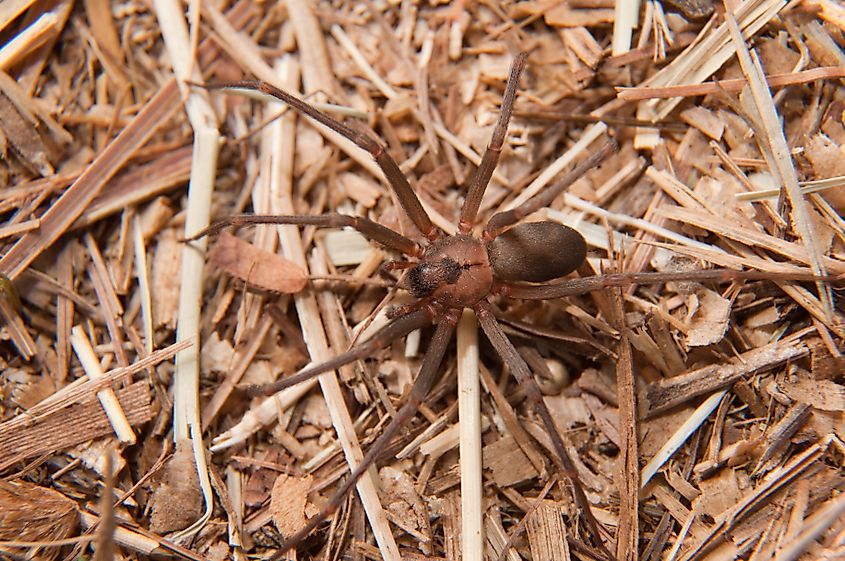
Perhaps the scariest spider in North America, the brown recluse (Loxosceles reclusa) is a smaller spider that is light brown to yellow and has three pairs of eyes. They are typically found in the Midwest and the South, from Texas to Georgia to Illinois. They are rare in South Carolina, and if a brown recluse is seen, it is usually only in the northeastern area of the state. Brown recluse spiders hide in dark, dry, sheltered areas, such as under rocks and wood piles, in basements and attics, in drawers, in cupboards, and in boxes.
Both female and male brown recluse spiders are venomous, with the venom equally toxic in both sexes. Females, however, are more likely to bite humans than males, especially if disturbed in a web. Males spend more time searching for mates and food, avoiding human contact. It can be hard to tell male and female brown recluse spiders apart, as they both are yellow to light or medium brown, but the females are slightly larger, with body lengths up to 0.75 inches.
Brown Recluse Spider Bites: Signs, Symptoms, and Treatment
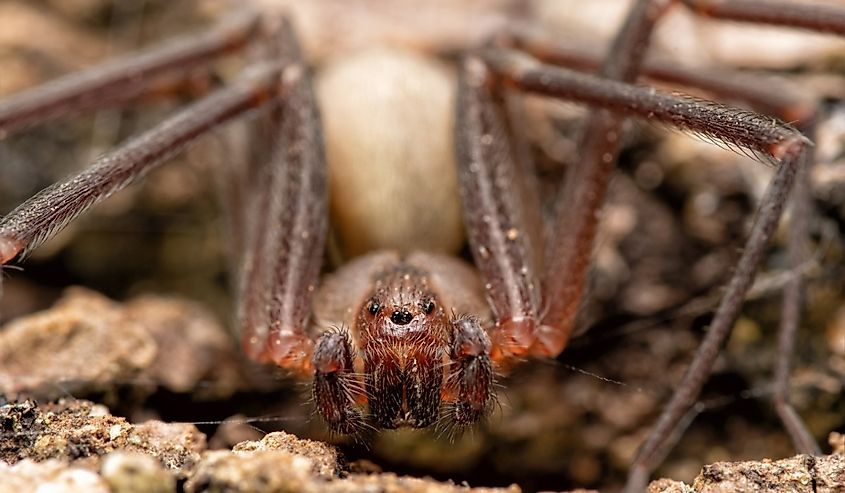
Brown recluse spider bites inject a toxic venom, containing the enzyme sphingomyelinase D, into its victim, which can cause immediate swelling and redness. Since they are larger, female brown recluse spiders have more venom than males, and their bites might cause more discomfort. Within a few hours, a brown recluse spider bite will have a red area and a pale center, like a bullseye. Burning and itching may develop within two to eight hours of a bite.
To treat a brown recluse bite, wash the affected area with soap and water, and, if needed, ice the area 10 minutes on and 10 minutes off. Over-the-counter pain medicine may be taken. If you are concerned by a victim's symptoms, call the Poison Control Center. If symptoms are severe, such as extreme pain, difficulty breathing, fever, chills, dizziness, or nausea, take the victim to the emergency room. If a child, older adult, or an adult with an illness or preexisting condition has been bitten by a brown recluse, take them to the emergency room immediately.
How Can I Reduce My Chances of Being Bitten by a Venomous Spider in South Carolina?
In order to avoid coming into contact with venomous spiders in South Carolina, there are some precautions you can take:
- Sweep your house, sheds, and any outbuildings free of spider webs.
- If you will be working outdoors in areas where spiders may be present, wear protective clothing such as long sleeves, pants, and gloves.
- Shake out blankets, clothing, and shoes before wearing them.
- Remove clutter and wood piles from around your home.
- Seal potential entry points in your home, such as cracks and crevices, with caulking.
Stay Safe From Spiders in South Carolina
Although South Carolina is home to four venomous spider species (the Southern black widow, Northern black widow, brown widow, and brown recluse), human encounters with these spiders are relatively rare, and bites are even less common. Their venom can cause symptoms, but most bites by these spiders are not lethal. Prompt medical attention can help to reduce risk and manage the effects of a spider bite. By understanding the habits, habitats, and characteristics of these spiders, people can safely coexist with them, reducing fear and increasing awareness.











